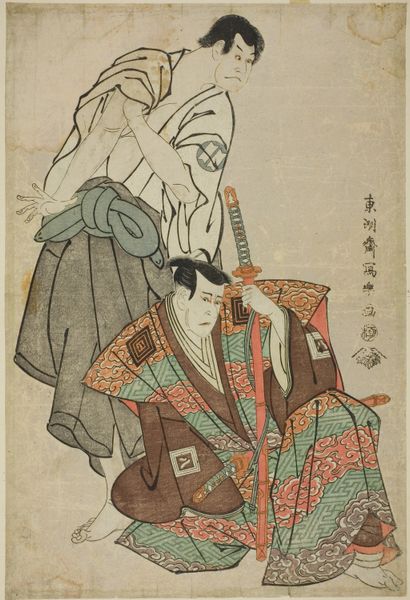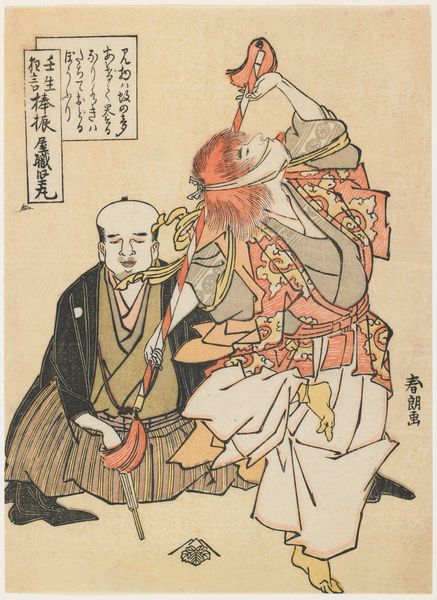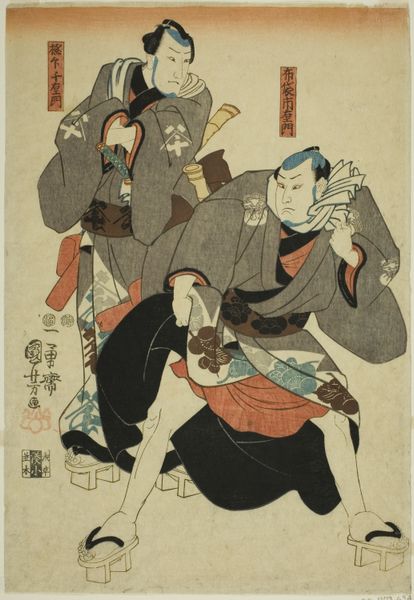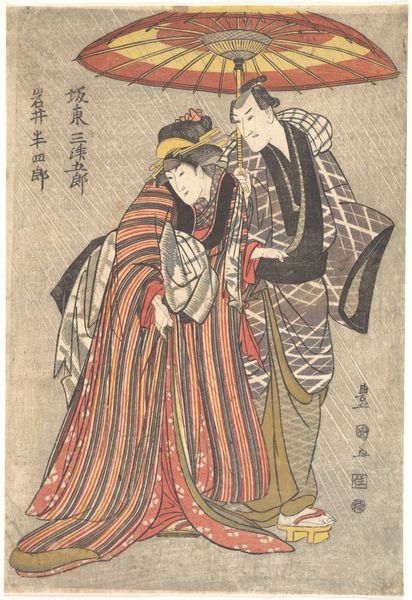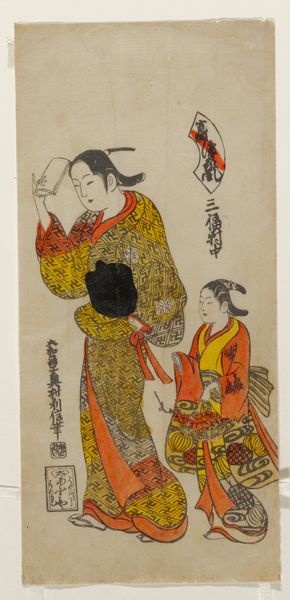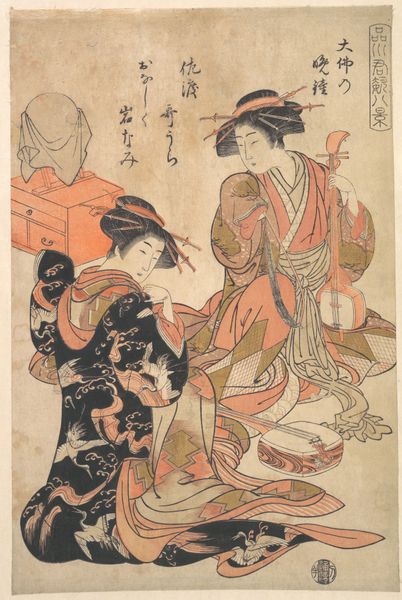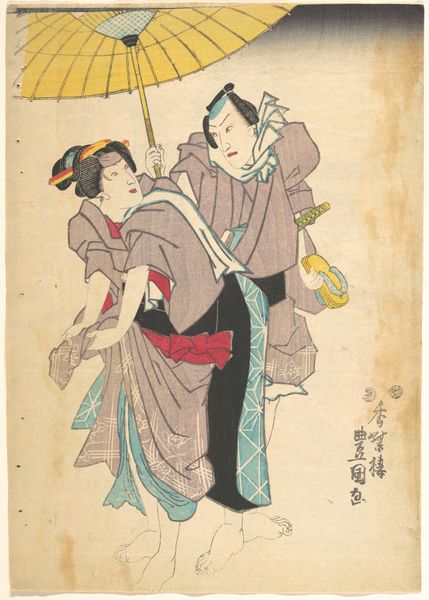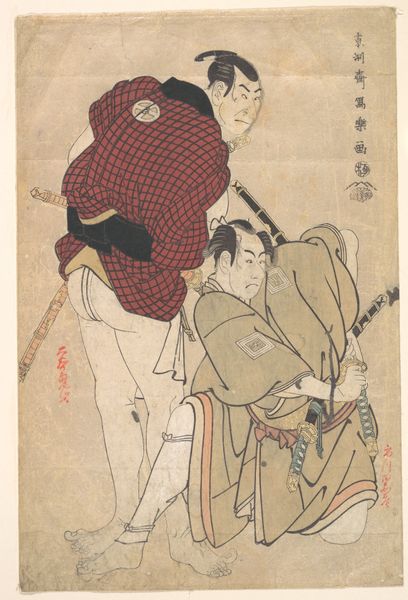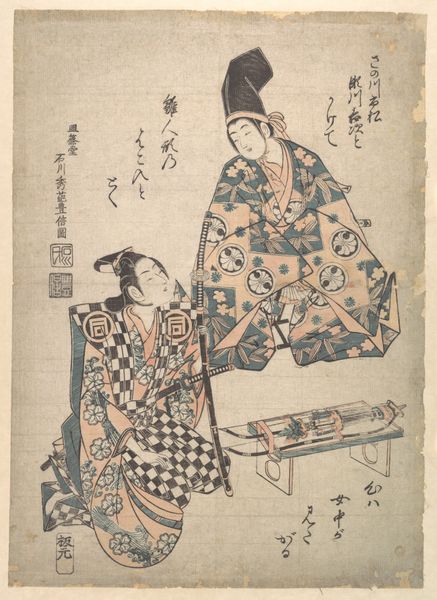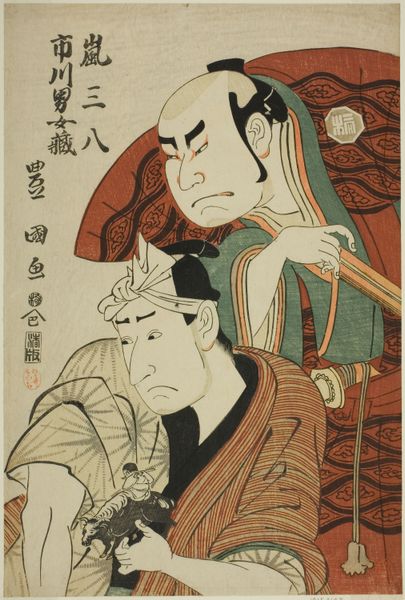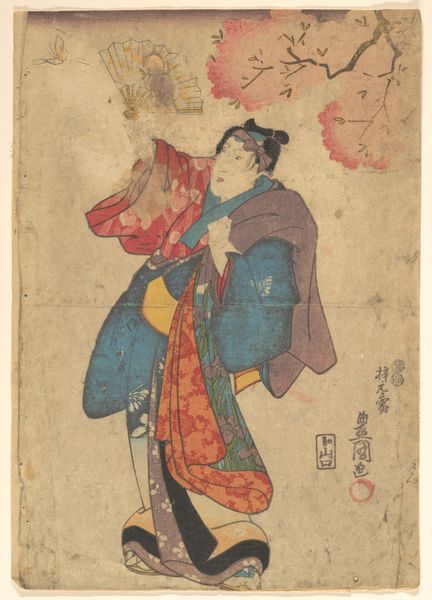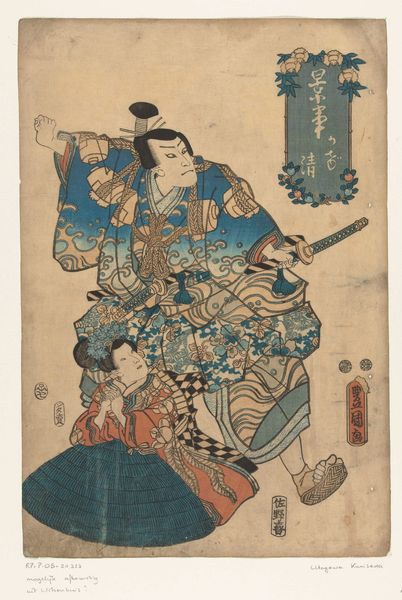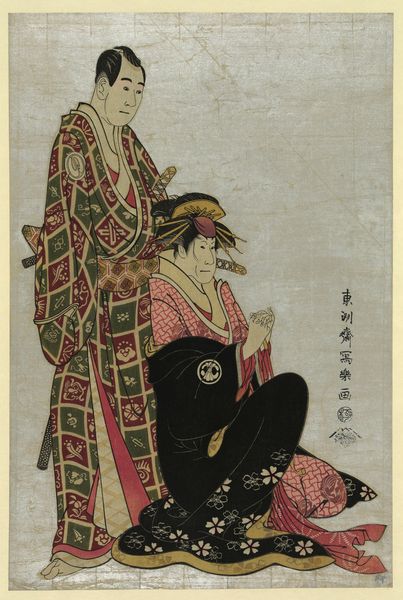
Memorial Portrait of the Actor Nakamura Utaemon IV with Ichimura Takenojō V 1852
0:00
0:00
print, ink, woodblock-print
#
portrait
# print
#
ukiyo-e
#
japan
#
ink
#
woodblock-print
#
genre-painting
Dimensions: 14 × 9 13/16 in. (35.56 × 24.92 cm) (image, sheet, vertical ōban)
Copyright: Public Domain
This memorial woodblock print depicts the actors Nakamura Utaemon IV and Ichimura Takenojo V, and was created by an artist from the Utagawa School in Japan. It speaks volumes about the cultural significance of Kabuki theatre in Japanese society. The print commemorates these popular figures, suggesting the central role of actors in the cultural imagination. Kabuki, as a theatrical form, often reflects and comments on social structures, class dynamics, and moral values. The choice of subject matter and the act of memorializing actors through art underscores the blurring lines between art, entertainment, and social commentary. The inscriptions and visual codes within the print, such as the actors' costumes and poses, could reference specific performances. As a historian, I’d want to delve into playbills, theatre reviews, and other ephemera to uncover the social context in which this print was created. What did these actors represent to their audience? And how does this artwork reflect the social and institutional place of theatre within Japanese society?
Comments
No comments
Be the first to comment and join the conversation on the ultimate creative platform.
